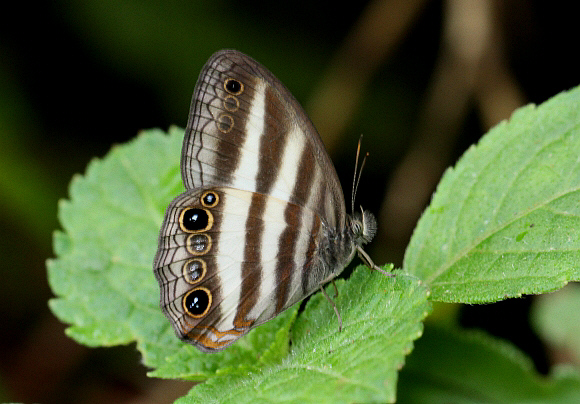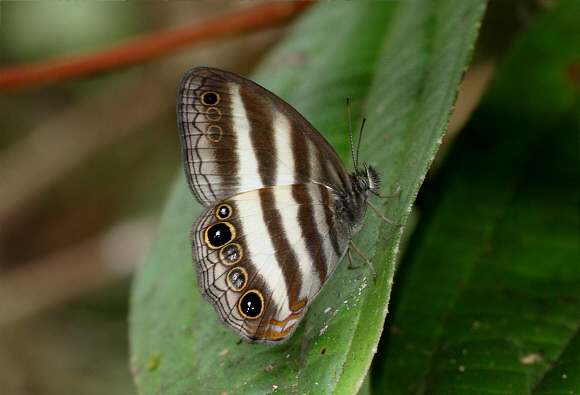
Introduction
There are 1100 known species of Satyrinae in the neotropical region. About 400 of these are placed in the Euptychiina. Butterflies within this tribe include the ‘ringlet’ genera Euptychia, Magneuptychia, Harjesia, Cissia, Caeruleuptychia, Magneuptychia, Harjesia etc; together with Oressinoma and the various ‘wood nymph’ genera i.e. Parataygetis, Posttaygetis and Taygetis. Most are inhabitants of the forest understorey and tend to fly close to the ground. They generally avoid sunlight and prefer to fly at dawn or on cloudy days when light levels and temperatures are low.
There are 8 known species in the genus Pareuptychia. The butterflies are larger than most other ringlets, and are characterised by having white wings marked with broad dark brown bands.
Pareuptychia ocirrhoe ( previously known as Cissia hesione ) is one of the most widespread and abundant ringlets. It is found from Mexico to northern Argentina.

Habitats
The habitats of this species are diverse, and include lowland secondary rainforest, cloudforest up to about 1900m and disturbed forest edge habitats including roadsides. The butterflies tend to be more abundant during the rainy season, and are most active when the sun reappears after heavy rainfall.
Lifecycle
The egg is globular, black, and laid singly on or near the grass Eleusine where it grows around the base of trees or bushes. Eggs are commonly parasitised by Trichogrammatid and Scelionid wasps. The larva is solitary and feeds nocturnally. When fully grown it is bright green, with a pair of short caudal prongs. It has a green head which bears a pair of short red horns. If disturbed it becomes rigid and drops to the ground, behaving like a piece of broken stem. The caterpillars are commonly parasitised by Braconid wasps – a single larva playing host to up to 25 of their grubs. The chrysalis is smooth, pale green in colour, and is suspended by the cremaster from a stem or stout leaf.

Adult behaviour
The butterflies are solitary in behaviour, but usually several can be found within the same vicinity. They fly in cloudy or sunny conditions, and can be found deep within the forest, or in open areas such as forest edges or along sunlit forest tracks. In common with other neotropical ringlets they feed as adults at decomposing fungi and rotting fruit.
I have seen adults of ocirrhoe and various other ringlets being attacked and consumed by robber flies ( Asilidae ) and note that DeVries has also recorded this behaviour, which suggests that these butterflies may be a major constituent of the pabulum of these large flies.

